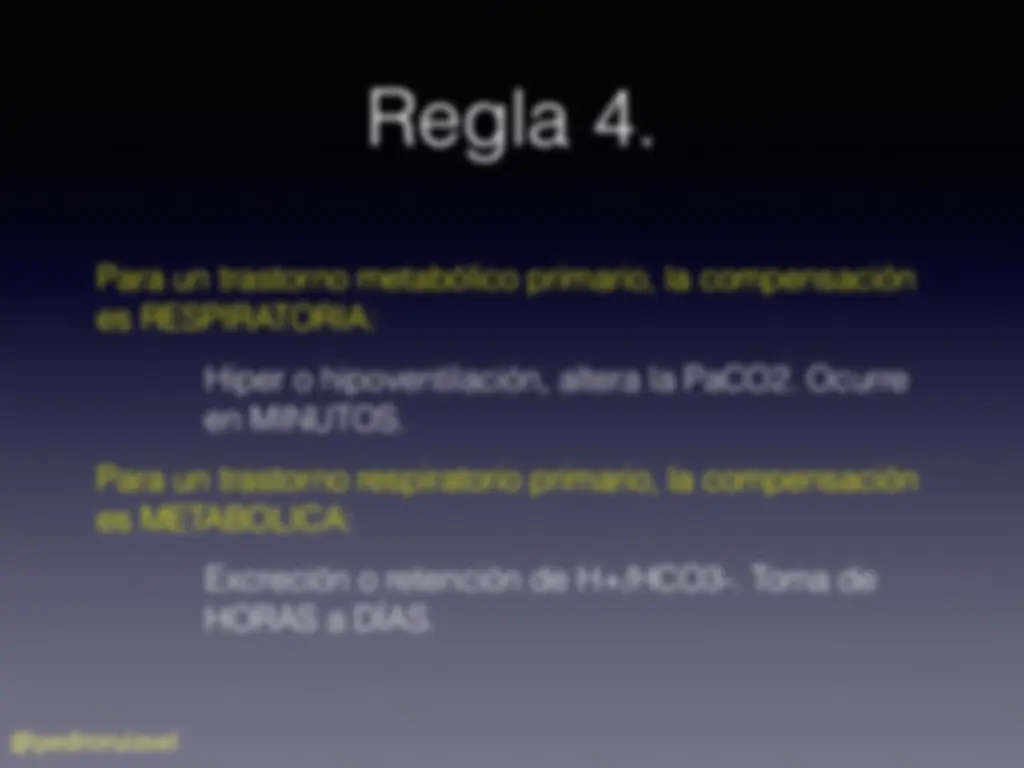




































Study with the several resources on Docsity

Earn points by helping other students or get them with a premium plan


Prepare for your exams
Study with the several resources on Docsity

Earn points to download
Earn points by helping other students or get them with a premium plan
Community
Ask the community for help and clear up your study doubts
Discover the best universities in your country according to Docsity users
Free resources
Download our free guides on studying techniques, anxiety management strategies, and thesis advice from Docsity tutors
Analisis sobre interpretación de gases arteriales en segundo no nivel
Typology: Summaries
1 / 42

This page cannot be seen from the preview
Don't miss anything!



































Dr. Pedro Ruiz Velásquez. Medicina Interna y Cuidados Intensivos. Mérida, Yucatán. Abril, 2024.
@pedroruizvel
@pedroruizvel
@pedroruizvel pH 7.20, HCO3 20, PaCO2 52 Nomograma de Brenner-Davenport.
Método de 5 Reglas de Whittier-Rutecki.
@pedroruizvel
@pedroruizvel
@pedroruizvel
Determinar proceso primario: Si el pH disminuído (acidemia) hay 2 opciones: HCO3 bajo, metabólico. PaCO2 aumentado, respiratorio. Si el pH está aumentado, hay 2 opciones: HCO3 aumentado, metabólico. PaCO2 disminuido, respiratorio. Trastorno primario Problema pH HCO3 PaCO Acidemia metabólica Aumento de H+ o pérdida de HCO3. ↓^ ↓↓^ ↓ Alcalemia metabólica Aumento HCO3 o pérdida de H+. ↑^ ↑↑^ ↑ Acidemia respiratoria Hipoventilación. (^) ↓ ↑ ↑↑ Alcalemia respiratoria Hiperventilación. (^) ↑ ↓ ↓↓
@pedroruizvel Na 140 Cl 106 HCO 24 10 Na 140 Cl 106 HCO 14 20
BA normal AM con BA aumentada ¡Calcula SIEMPRE la brecha aniónica!
@pedroruizvel
@pedroruizvel
@pedroruizvel
@pedroruizvel
pH fisiológico ACIDEMIA ALCALEMIA PaCO2 HCO 40 mmHg 24 mEq